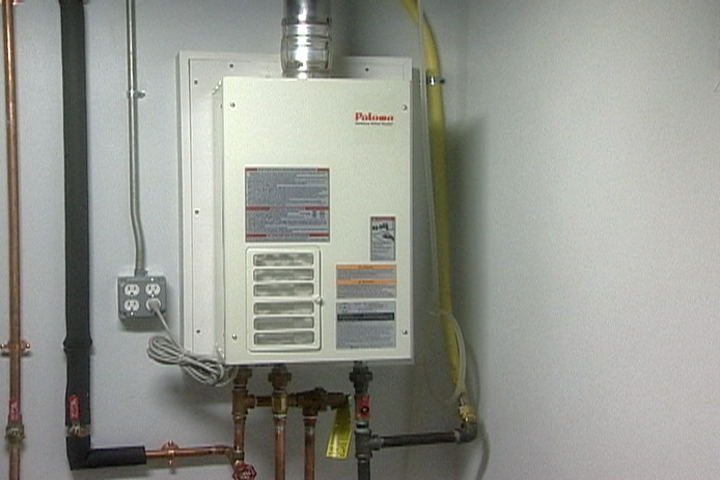How do you really feel on the subject of Tips For Maintaining Your Hot Water Heater?

Hot water is essential for day-to-day convenience, whether it's for a revitalizing shower or cleaning dishes. To guarantee your warm water system runs efficiently and lasts much longer, routine maintenance is essential. This write-up offers useful tips and understandings on exactly how to maintain your home's warm water system to avoid interruptions and costly fixings.
Introduction
Maintaining your home's hot water system might appear overwhelming, however with a few basic steps, you can guarantee it runs efficiently for many years ahead. This guide covers every little thing from recognizing your warm water system to do it yourself maintenance suggestions and understanding when to call in specialist assistance.
Relevance of Preserving Your Warm Water System
Routine upkeep not just prolongs the life-span of your hot water system yet also guarantees it operates effectively. Disregarding upkeep can result in lowered efficiency, greater power bills, and also early failing of the system.
Signs Your Hot Water System Demands Upkeep
Knowing when your warm water system requires interest can protect against major problems. Keep an eye out for signs such as irregular water temperature level, strange sounds from the heater, or rustic water.
Recognizing Your Warm Water System
Before diving into maintenance tasks, it's valuable to recognize the standard components of your hot water system. Normally, this consists of the hot water heater itself, pipelines, anode poles, and temperature level controls.
Monthly Maintenance Tasks
Routine regular monthly checks can assist capture minor problems before they intensify.
Purging the Hot Water Heater
Purging your hot water heater eliminates debris accumulation, boosting performance and lengthening its life.
Monitoring and Changing Anode Rods
Anode rods prevent corrosion inside the tank. Checking and changing them when broken is critical.
Checking and Adjusting Temperature Level Settings
Changing the temperature setups ensures optimum performance and security.
DIY Tips for Upkeep
You can execute several maintenance tasks yourself to maintain your warm water system in top problem.
Checking for Leakages
Regularly evaluate pipes and links for leakages, as these can cause water damages and higher bills.
Examining Pressure Alleviation Valves
Evaluating the pressure safety valve ensures it functions correctly and protects against excessive pressure build-up.
Shielding Pipes
Shielding warm water pipelines minimizes warm loss and can save power.
When to Call an Expert
While do it yourself upkeep is valuable, some issues need specialist expertise.
Complex Issues Requiring Professional Help
Instances include significant leaks, electric issues, or if your water heater is continually underperforming.
Regular Professional Maintenance Conveniences
Expert upkeep can consist of detailed assessments, tune-ups, and making certain conformity with safety and security requirements.
Conclusion
Normal upkeep of your home's hot water system is crucial for effectiveness, longevity, and expense savings. By following these tips and knowing when to look for specialist help, you can ensure a trusted supply of hot water without unanticipated disruptions.
How to Maintain an Instant Hot Water Heater
Before tinkering with your hot water heater, make sure that it’s not powered on. You also have to turn off the main circuit breaker and shut off the main gas line to prevent accidents. Also turn off the water valves connected to your unit to prevent water from flowing into and out of the appliance. 2. When you’re done, you have to detach the purge valves’ caps. These look like the letter “T†and are situated on either side of the water valves. Doing so will release any pressure that has accumulated inside the valves while at the same time avoid hot water from shooting out and burning your skin. 3. When the purge valves’ caps are removed, you have to connect your hosing lines to the valves. Your unit should have come with three hoses but if it didn’t, you can purchase these things from any hardware or home repair shops. You can also get them from retail stores that sell water heating systems. Read the user’s manual and follow it to complete this task properly. When the hosing lines are connected, open the purge port’s valves. 4. You should never use harsh chemical cleaners or solutions when cleaning your unit. Make use of white vinegar instead. It should be undiluted and you’ll probably use about 2 gallons. 5. Now flush your water heater. This task should probably take about 40 minutes. We can’t give you specific directions for this because the procedure is carried out depending on the type, model and brand of your heater. With that being said, refer to the user’s manual. 6. When you’re done draining the unit, you have to turn off the purge port valves again. Remove the hosing lines that you earlier installed on each of the water valves. Put the valve caps (purge port) back in their respective places and be very careful so as not to damage the rubber discs that are found inside these caps. 7. Now that everything’s back in place, check your user’s manual again to find out how to reactivate your water heating system. 8. Once it is working, turn one of your hot water faucets on just to let air pass through the heater’s water supply pipes. Leave the tap on until water flows smoothly out of it. https://www.orrplumbing.com/blog/2014/september/how-to-maintain-an-instant-hot-water-heater/

I'm just very inquisitive about Tips on Maintaining a Water Heater and I hope you enjoyed reading the blog entry. Are you aware of another individual who is involved in the niche? Why not promote it. Thanks a lot for being here. Kindly come by our site back soon.
Here